
The BJJ Half Guard is one of the most interesting aspects of Brazilian Jiu-Jitsu. It comes naturally to people even if they are complete beginners, and it is quite enticing to play. However, you soon realize there are plenty of variations of it. Moreover,r you realize that they won’t all work the same for you, nor will every variation suit you on every occasion. Furthermore, creating variations become redundant after a while if they don’t evolve. One such evolution is the Fishnet BJJ half guard.
Playing half guard is not hard if you know what you are doing. There are certain aspects of ht half guard that are crucial and they come in the form of common half guard principles. As with every principle, there are exceptions, of course, but for the majority of BJJ half guard variations, these principles hold true. Before we go into the ins and outs of the innovative Fishnet half guard variation, we’ll explore some common principles of this popular BJJ position.
The World Of BJJ Half Guard(s)
In Brazilian Jiu-Jitsu, the half guard is such an instinctual position that it was actually developed pretty much by instinct. Gordo developed the half guard when he had an injured leg and was trying to hide it in order to protect it when rolling. At the time, the only alternative was the closed Guard, so the end product was – half guard. Since then, we’ve had a steady stream of half guard variations. Some are just flashy stuff, others fade away after a couple of years, while some remain for good.
The underhook half gaud is the most utilized version to this day, ranging from some basics to stuff like the Coyote half guard. Overhook half guard variations never really caught on, despite being highly effective when modified a little bit. That said, Eddie bravo’s lockdown half guard burst through most conception about the position, proving people can play the position with their backs on the ground. Then cam more modern version like the butterfly half guard that ties in perfectly with the modern leg-lock based game.
There are of course plenty of Gi and nO-Gi based half guard games in between, and they’ve all added to the huge pool of BJJ half guаrd options. However, it is the modifications to some of the basic versions, like the underhook half guard that really hit the nail on the head. The Fishnet is just such a half guard.
The Basics Of The “Fishnet” BJJ Half Guard
What the Fishnet BJJ half guard does is basically get past the issue of people trapping that underhook arm for Darces and other front headlock attacks. How? Simple – it takes the underhook away past the armpit, placing it much lower around the waist.
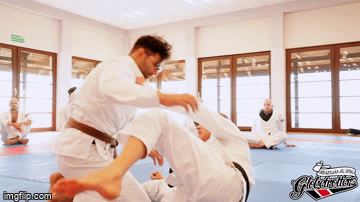
the major change comes in the form of the underhook arm which instead of just going under the armpit, now goes around the waist gripping the pelvis on the opposite side.
Hiding the head in the nearside leg completes the entry, but in order to get more control, you need one more key detail – the Coil. That top leg of yours that kicked under the armpit now has the task of scooping the half guard leg at calf level and twisting it so that the heel is facing upward. That’s when you’ve got your opponent trapped in the fishnet BJJ half guard.
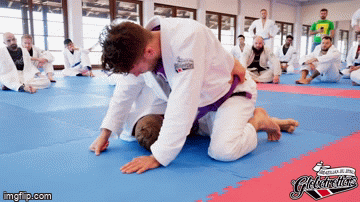
Advanced Fishnet Maneuvers
This gets us to the fun aspects of the Fishnet BJJ half guard. So far, we went through some of the basics like the position itself and entering from the most common half guard variation – the knee shield. Plus we looked at a couple of “basic” sweeps too, which work with a surprisingly high percentage of effectiveness.
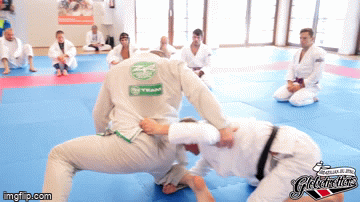
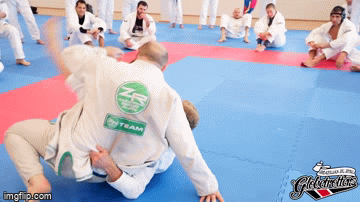
And, if you want to e extra evil, you can just go for the Vaporizer calf slicer rolling submission from there.
Final Thoughts
The Fishnet BJJ half guard is a very funky variation that has proven to be really handy for me on multiple occasions. Gi or No-Gi, this crazy little half guard works, and it particularly useful against larger opponents. Plus, the more advanced options that counter that backstep, jump over and leg lock entries are really useful to deal with high-level grapplers or those lightning-fast competitors. Give it a try!


![Darce Choke Encyclopedia – Origins, Mechanics and Variations [2025] BJJ, choke, Brabo, BJJ Darce Choke, D'arce Choke, Darce BJJ Choke](https://bjj-world.com/wp-content/uploads/2017/11/JungPoirierLeeYahoo-218x150.jpg)









![Get Off My Legs Gringo Craig Jones DVD Review [2025] Get Off My Legs Gringo Craig Jones DVD Review](https://bjj-world.com/wp-content/uploads/2025/03/get-off-my-legs-gringo-craig-jones-dvd-review-218x150.png)

![Leg Lock Entries Helena Crevar DVD Review [2025] Leg Lock Entries Helena Crevar DVD Review](https://bjj-world.com/wp-content/uploads/2025/03/leg-lock-entries-helena-crevar-dvd-review-218x150.png)
![Special K Guard Neil Melanson DVD Review [2025] Special K Guard Neil Melanson DVD Review](https://bjj-world.com/wp-content/uploads/2025/03/special-k-guard-neil-melanson-dvd-review-218x150.png)
![Arm Bar It All Shawn Melanson DVD Review [2025] Arm Bar It All Shawn Melanson DVD Review](https://bjj-world.com/wp-content/uploads/2025/03/arm-bar-it-all-shawn-melanson-dvd-review-218x150.png)

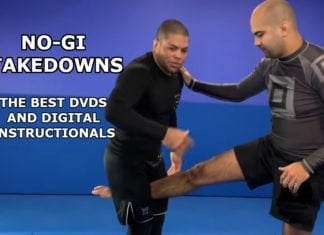
![Jeff Glover Deep Half Revolution DVD Bundle Review [2024] Jeff Glover Deep Half Revolution DVD Bundle Review](https://bjj-world.com/wp-content/uploads/2024/10/jeff-glover-deep-half-revolution-dvd-bundle-review-100x70.png)
![The Empty Half Guard Michael Currier DVD Review [2025] The Empty Half Guard Michael Currier DVD Review](https://bjj-world.com/wp-content/uploads/2025/03/empty-half-guard-michael-currier-dvd-review-100x70.png)
![Compass Kneebar System Charles Harriott DVD Review [2024] Compass Kneebar System Charles Harriott DVD Review](https://bjj-world.com/wp-content/uploads/2024/11/compass-kneebar-system-charles-harriott-dvd-review-100x70.png)

![Modern Split Squat Passing Jason Rau DVD Review [2024] Modern Split Squat Passing Jason Rau DVD Review](https://bjj-world.com/wp-content/uploads/2024/11/modern-split-squat-passing-jason-rau-dvd-review-100x70.png)
![Old School BJJ Ricardo Cavalcanti Fundamentals DVD Review [2024] Old School BJJ Ricardo Cavalcanti Fundamentals DVD Review](https://bjj-world.com/wp-content/uploads/2024/09/old-school-bjj-ricardo-cavalcanti-dvd-preview-100x70.png)
![Crush The Guard Vagner Rocha DVD Review [2024] Crush The Guard Vagner Rocha DVD Review](https://bjj-world.com/wp-content/uploads/2024/10/crush-the-guard-vagner-rocha-dvd-review-100x70.png)
![Reverse De La Riva System Mikey Musumeci DVD Review [2024] Reverse De La Riva System Mikey Musumeci DVD Review](https://bjj-world.com/wp-content/uploads/2024/11/reverse-de-la-riva-system-mikey-musumeci-dvd-review-100x70.png)

![Flow Pressure Kauan Barboza DVD Review [2025] Flow Pressure Kauan Barboza DVD Review](https://bjj-world.com/wp-content/uploads/2025/02/flow-pressure-kauan-barboza-dvd-review-100x70.png)
![Front Head Lock Kaynan Duarte DVD Review [2025] Front Head Lock Kaynan Duarte DVD Review](https://bjj-world.com/wp-content/uploads/2025/02/front-head-lock-kaynan-duarte-dvd-review-100x70.png)

![Zen Guide To Submission Grappling Margot Ciccarelli DVD Review [2025] Zen Guide To Submission Grappling Margot Ciccarelli DVD Review](https://bjj-world.com/wp-content/uploads/2025/02/submission-grappling-margot-ciccarelli-dvd-preview-100x70.png)
![Top Half Guard Neil Melanson DVD Review [2025] Top Half Guard Neil Melanson DVD Review](https://bjj-world.com/wp-content/uploads/2025/02/top-half-guard-neil-melanson-dvd-review-100x70.png)
![Gracie Secrets Closed Guard Kyra Gracie DVD Review [2024] Gracie Secrets Closed Guard Kyra Gracie DVD Review](https://bjj-world.com/wp-content/uploads/2024/12/closed-guard-kyra-gracie-dvd-review-100x70.png)



![Understanding The Distance On Top Gui Mendes DVD Review [2024] Understanding The Distance On Top Gui Mendes DVD Review](https://bjj-world.com/wp-content/uploads/2024/10/distance-on-top-gui-mendes-dvd-review-100x70.png)
![Dynamic Headquarters Passing Jason Rau DVD Review [2024] Dynamic Headquarters Passing Jason Rau DVD Review](https://bjj-world.com/wp-content/uploads/2024/10/dynamic-headquarters-passing-jason-rau-dvd-review-100x70.png)

![360 Degrees Guard Retention Thiago Abud DVD Review [2024] 360 Degrees Guard Retention Thiago Abud DVD Review](https://bjj-world.com/wp-content/uploads/2024/10/360-degrees-guard-retention-thiago-abud-dvd-review-100x70.png)
![The Stack Pass Andre Galvao DVD Review [2025] The Stack Pass Andre Galvao DVD Review](https://bjj-world.com/wp-content/uploads/2025/01/the-stack-pass-andre-galvao-dvd-review-100x70.png)


![Edging Yourself Out Of Danger Craig Jones DVD Review [2024] Edging Yourself Out Of Danger Craig Jones DVD Review](https://bjj-world.com/wp-content/uploads/2024/12/edging-yourself-out-of-danger-craig-jones-dvd-review-100x70.png)
![Unpinnable Mount Escape Mastery Haleem Syed DVD Review [2025] Mount Escape Mastery Haleem Syed DVD Review](https://bjj-world.com/wp-content/uploads/2025/01/mount-escape-mastery-haleem-syed-dvd-review-100x70.png)